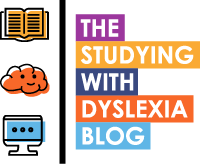Note-taking for many dyslexic learners can be a source of anxiety when studying in class or in lectures. So why not encourage a new way of note-taking?
This article is brought to you by Sonocent.
Since my daughter was diagnosed with dyslexia, many of you will know that I have been on a journey of learning about dyslexia and how it affects ones ability to study.
As someone who originally studied as a chemist, I remember how exhausting it was to sit in lectures and copy down notes from the board only to get home and find that what made sense in the lecture somehow magically stopped making sense. All I had to go on was my own set of notes that I often felt were inadequate as I was always racing against time to capture them and so their quality was lacking. I would often try to remember the exact point in the lecture that my notes referred to and try to imagine what the lecturer was saying as they, at the time, had clearly articulated the concept thus convincing me that I knew what they were talking about.
Alas I found myself feeling anxious in class as well as at home trying to decipher notes that had almost failed to remind me of the learning. Once again my focus had resulted on coping with studying rather than on enjoying the content I was studying, thus making studying laborious and tiring. Added to the challenge was my own gaps in concentration as my mind floated away from what the lecturer was saying which ultimately resulted in gaps in my note taking.
I am of course referring to my own experience of studying for my degree that took place some twenty years ago. More recently, on my training to be a therapeutic counsellor, I was able to make studying a bit more fun by using technology to help with note taking in the form of using my Microsoft Surface Go to take photos of the board (to reduce copying) and then use the Surface pen to annotate the notes in the photo all withing Microsoft OneNote. This helped me a lot but this process still relied on the accuracy of my annotations and in many ways did not capture the subjective comments of the lecturer who, at the time, could help me to understand his board notes.
What would have been useful was to be able to take notes AND record what the lecturer was saying and then match those notes up. It would almost be a ‘360’ approach to note taking. I would literally be using a multi-sensory approach to learning with handwritten notes with auditory support.
Recently, Sonocent, a sponsor of the Studying With Dyslexia Blog, informed me that they are launching a new product that promises to make note taking easier for students. This product is called Glean.
Glean is a browser based app that can be used online or offline to record lectures but also allows the student to annotate different parts of the recording for reference when the student is going back over the notes (aka the recording from the lecture).
I wanted to find out more and I found a webinar about it on YouTube that I would like to share with you.
The webinar is not a short one, but it provides an interesting insight into the use of recordings for revision and then gives an overview of Glean. Please take a look and let me know what you think? Would the technology work for the young dyslexic thinkers that you know who are struggling to take notes in schools or colleges?





